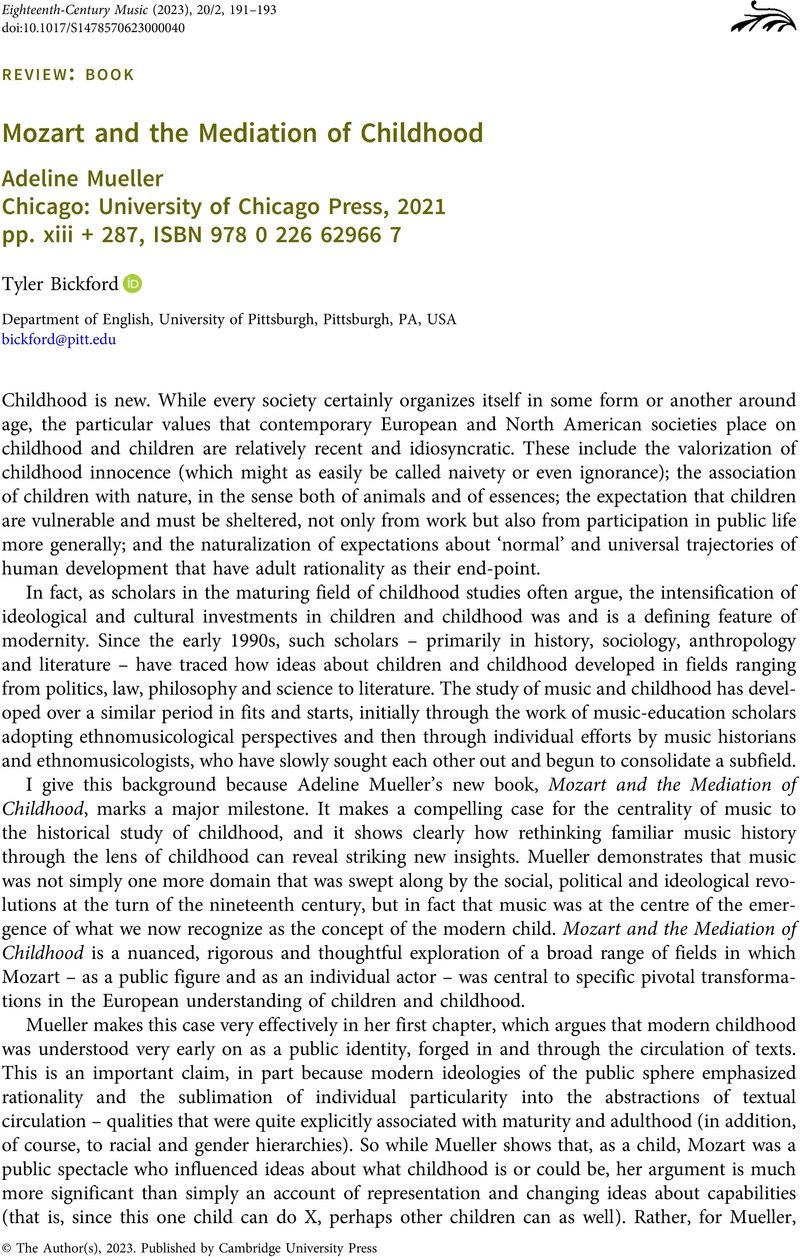No CrossRef data available.
Article contents
Mozart and the Mediation of Childhood Adeline Mueller Chicago: University of Chicago Press, 2021 pp. xiii + 287, ISBN 978 0 226 62966 7
Review products
Mozart and the Mediation of Childhood Adeline Mueller Chicago: University of Chicago Press, 2021 pp. xiii + 287, ISBN 978 0 226 62966 7
Published online by Cambridge University Press: 25 August 2023
Abstract
An abstract is not available for this content so a preview has been provided. Please use the Get access link above for information on how to access this content.

- Type
- Review: Book
- Information
- Copyright
- Copyright © The Author(s), 2023. Published by Cambridge University Press



